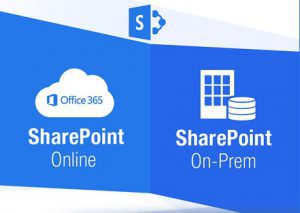Transitioning to a Hybrid SharePoint Environment
 Following on yesterday’s post on capacity planning, today I thought I’d focus specifically on the transition to a hybrid environment. With the push toward Office 365 and SharePoint Online, many organizations are once again considering the state of their enterprise collaboration environments, and contemplating their options for improving communication and content sharing across the organization. For many, the move to SharePoint 2013 or 2016 still feels relatively recent (and it may have been very recent for some of you).
Following on yesterday’s post on capacity planning, today I thought I’d focus specifically on the transition to a hybrid environment. With the push toward Office 365 and SharePoint Online, many organizations are once again considering the state of their enterprise collaboration environments, and contemplating their options for improving communication and content sharing across the organization. For many, the move to SharePoint 2013 or 2016 still feels relatively recent (and it may have been very recent for some of you).
For many customers, a new version does not automatically kick off a planning cycle for the next upgrade. Some of the earliest lessons of my project management career had to do with software and hardware upgrades. Back in my Pacific Bell days, I was managing projects within our California-based data centers with internal clients across the state. When it came to upgrades, my management team would ask:
1) Has the business realized value equal or greater than the investment made?
2) Is there a strong business case (new value that we could not otherwise achieve) for moving to the latest version?
My team was focused on getting the most out of their existing investments, rather than chase every new technology. For many other organizations, they’re seeing internal teams and business units pushing toward the latest collaboration and communication offerings, urging IT to enable more solutions in the cloud. But sometimes it makes sense to slow things down, ask questions, and review the data before moving forward. And that, in my view, is why we’ve seen such a large number of SharePoint customers move toward a hybrid model rather than immediately move all production systems into the cloud.
For those who may have made the jump to the latest version of SharePoint, whether online or on-premises, more than likely the process of moving was less than ideal. Migrations can be messy. Some aspects can be (and should be) driven by the end users, but if your environment contains any degree of complexity, your move was probably more of a centralized effort. Migrations are an iterative process. But migrations are also an opportunity to reorganize, to clean up and restart your governance strategy (or to put a missing strategy in place), and to establish more robust change management practices based on your extensive and seasoned experience with SharePoint.
This time of transition is also an opportunity to re-establish your information architecture, clean up and organize your site topology, your taxonomy, your content types and templates. It is a good time to clean up roles and permissions, and to reaffirm your content retention, security and compliance policies. And it is a time for improving the user experience, simplifying the interface for some business activities — automating others through workflow, forms, and business process alignments to improve adoption.
For many organizations, this transition may not mean a wholesale move from your current infrastructure investments, but a hybrid approach which allows you to keep the solutions that are meeting your business requirements today, while transitioning other work loads to the cloud. For some, it makes total sense to get out of the infrastructure business and move to the cloud — and valid reasons for others to stay put on prem. And you don’t need to roll out an entirely new platform to clean up, refresh, and realign. For many companies, hybrid deployments will be the standard for the next few years.
As you start thinking about building out your hybrid environment, remember that there may be differences between how content and systems can be managed on prem versus in the cloud. For example, if your plan is to keep SharePoint on prem for your intranet, but utilize SharePoint Online for a customer or partner extranet, activities like permissions management are different between the platforms. Some reports available on prem are not available online, and without a third-party solution to centralize this activity, you will need to maintain them separately — which means more overhead, and more governance oversight. Other areas where you should consider the on prem and online differences include:
- Location / facilities
- Software licenses and support
- Hardware and maintenance
- Onsite support, personnel skills
- Level of customization
- Governance, auditing, security, compliance
- Disaster Recovery and Business Continuity
- Upgrades and migration
If a hybrid SharePoint environment is the right path forward for your organization, remember that there are some fantastic tools available to help you manage and automate.




